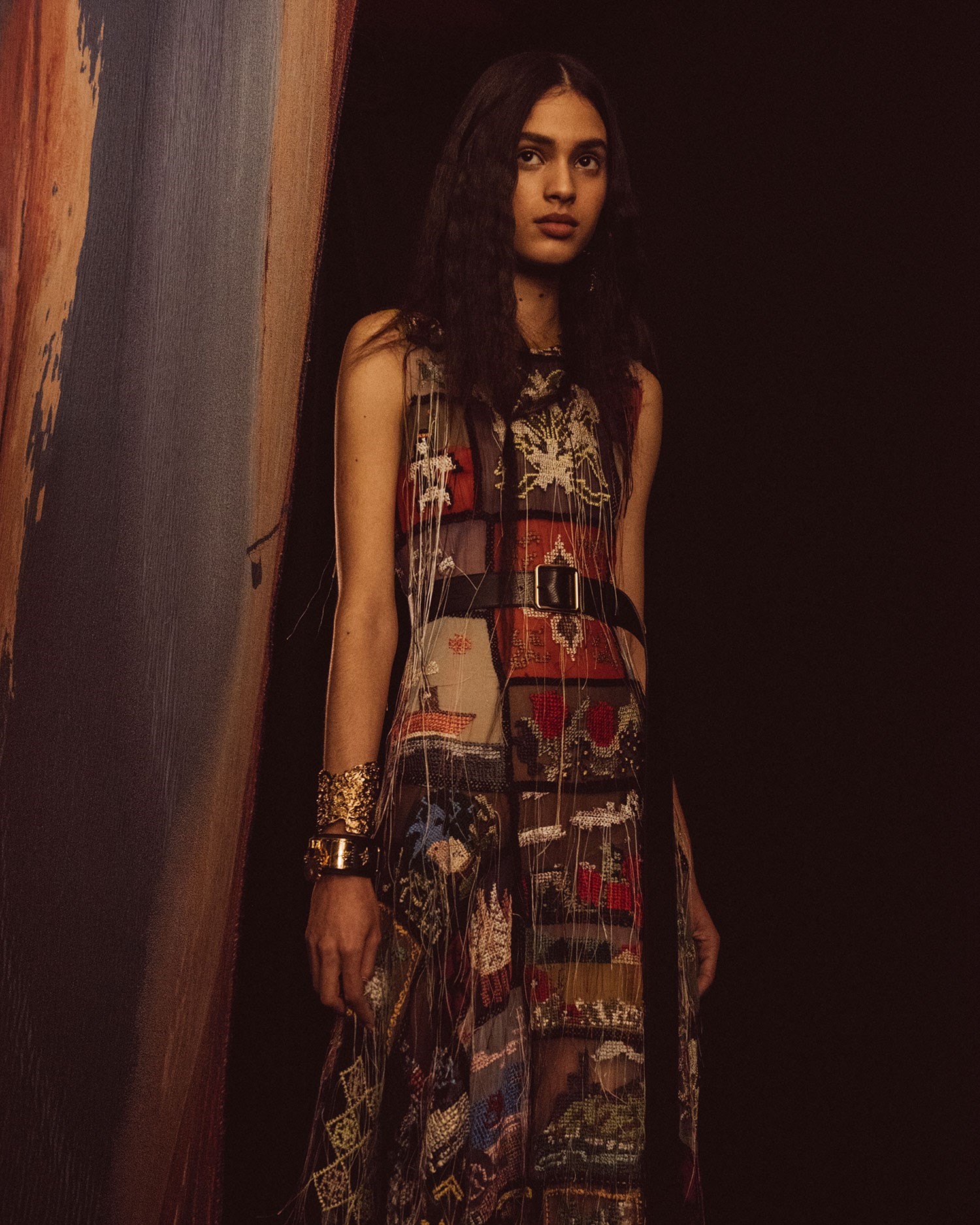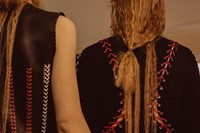Cornish customs including wish or “Cloutie” trees, paganism, the heroines of Arthurian legend and witches, black and white, were the inspiration behind Sarah Burton’s Autumn/Winter 2017 collection for Alexander McQueen. “It really started when we went to Cornwall and it was so beautiful,” the designer confirmed the day before the show was staged in the Jardin du Luxembourg in Paris. “We found it very moving.”
A Wishful Optimism
The respect for handcraftsmanship which has always been at the heart of the house of Alexander McQueen but appears more central to Sarah Burton’s collections now than ever before was evident here: everywhere from the set to the exquisite patch-working and embroidery making its way across the surfaces of clothes. The former was a reference to the brightly coloured cushions placed on church pews in far-flung locations and lovingly created by local worshippers. It came first as a print across dresses with sleeves that reached almost to the fingertips and handkerchief hems, and later as actual patch-worked silk jacquards. The loose threads, lacing, cross-stitch embroideries and a ‘wish tree’ tweed shot through with rainbow bright ribbon were both equally evocative of communities coming together to create lovely and meaningful environments that endure across the centuries. The wish tree is – as the name suggests – visited by all and sundry who bind votive ribbon, thread, trinkets and more to its branches and have done throughout history and to this day. “The trees felt so hopeful and optimistic,” Burton says of this reference in particular.
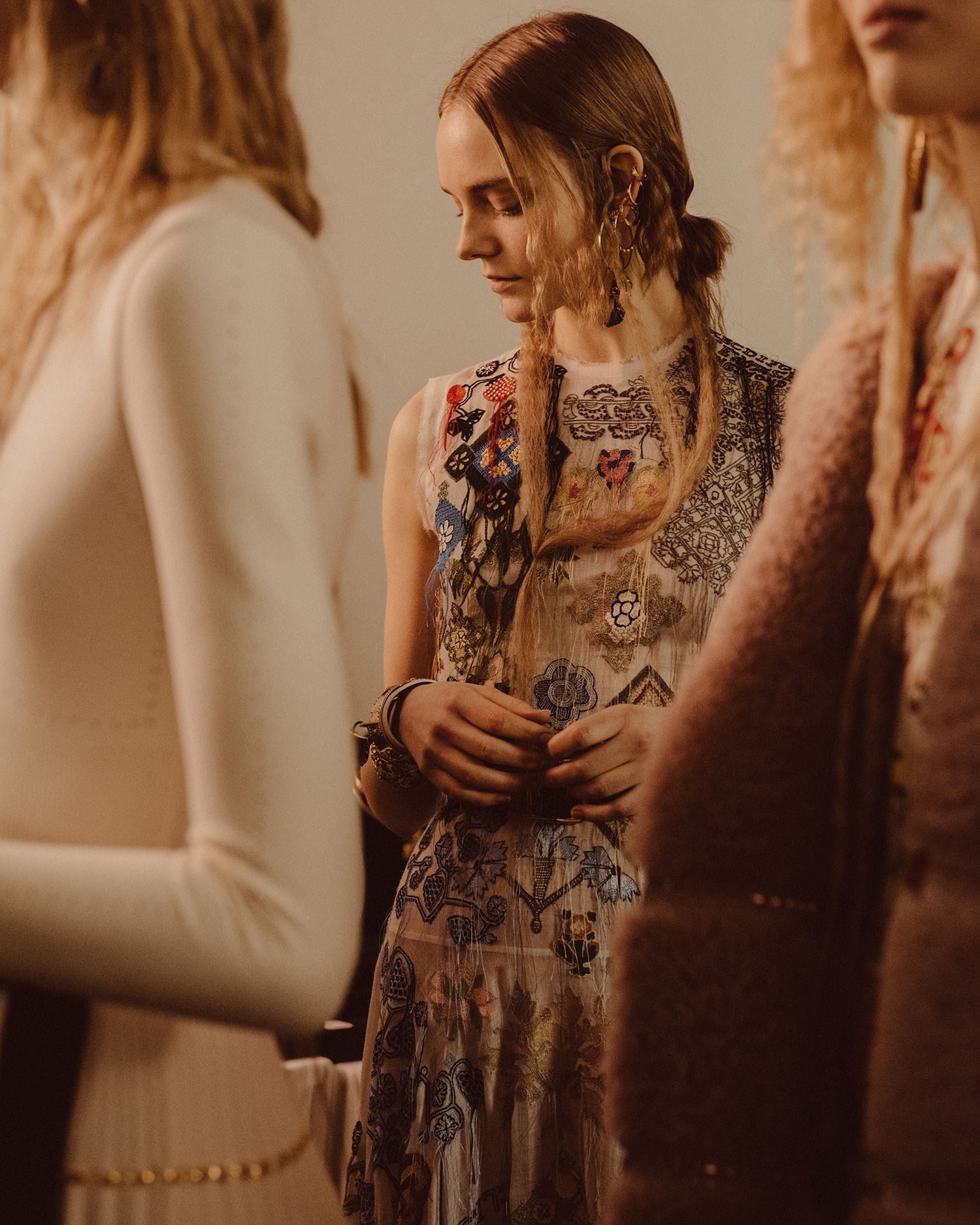
A Legendary Grace
The dignified and magically remote heroines of Arthurian legend were also part of this story. The set was hung with woven banners portraying the Cornish sunset, only upside down. “Like the world turned upside down,” Burton confirms and, while there’s no overt political motivation here, a sense of humanity having lost touch with nature clearly underpinned the whole, just as it always did with the house’s founder. A languid silhouette, tangled tendrils of hair reaching almost to the waist, the aforementioned lacing, gently armoured knits, at least some of them woven with the finest gold thread reminiscent of angel hair, and more all whispered of Guinevere, Isolde, The Lady of the Lake, and The Lady of Shalott. There was a sense of humility and modesty to this collection that echoed the gentle values these characters represent. The Lady of Shalott, the story goes, was confined to a tower and forbidden to look out of the window at the world. She saw life through a mirror and wove a tapestry illustrating its wonders captured in its reflection. And so cross-stitched hedgehogs, foxes, wild berries and, most touching, the date of birth of Lee Alexander McQueen himself, March 17, 1969, were embroidered, at times in reverse, across the lightest and most fragile gowns.
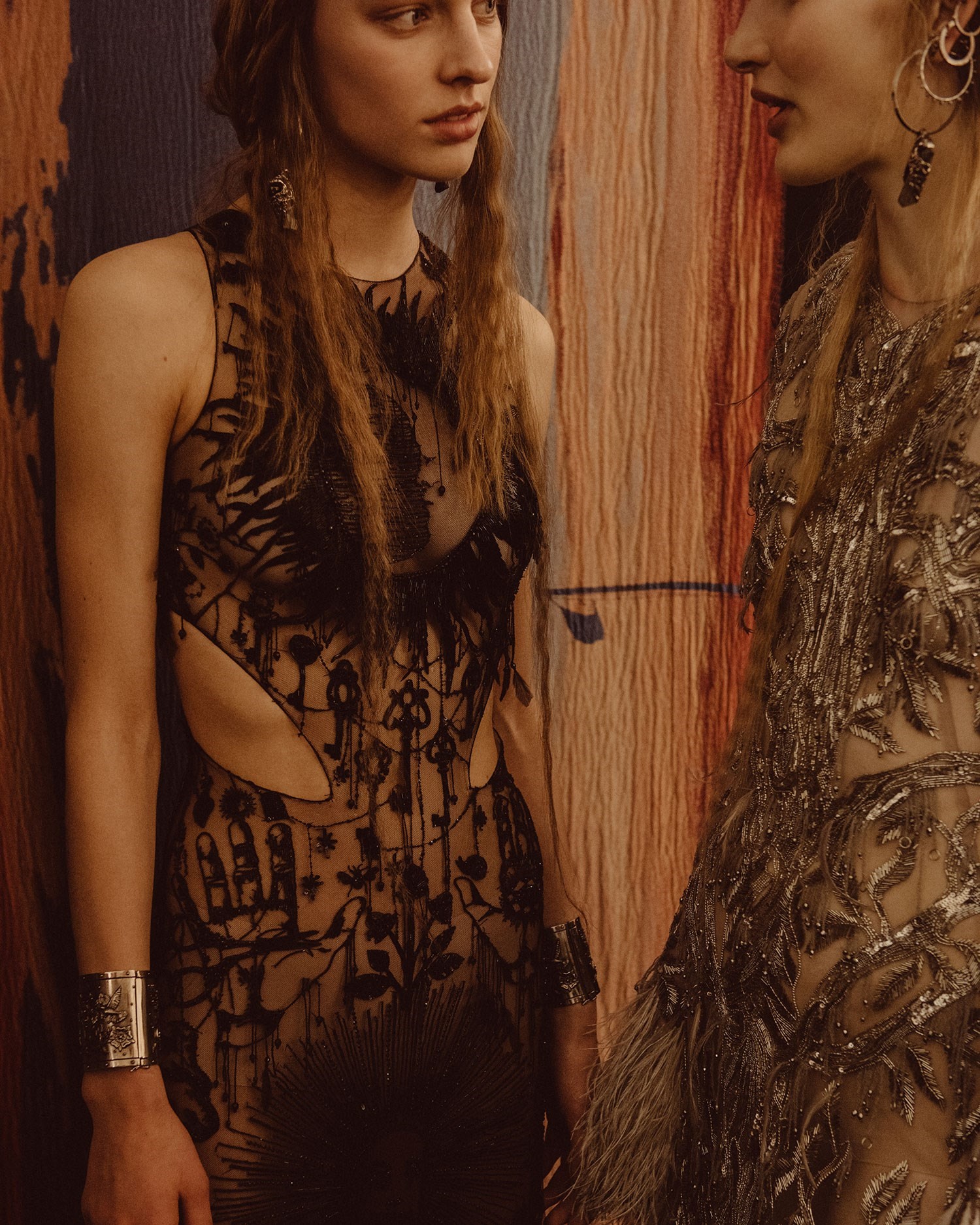
The Power of Witchcraft
The power of witchcraft could be seen in two of the finale exits crafted in nude silk tulle with mystic symbols, birds, rabbits, hares and frogs beaded, feathered and jewelled to a level more reminiscent of haute couture than ready-to-wear, although again there was a sense of grounding, not least thanks to paper flat footwear also covered in small and perfectly formed hand-finished motifs. One witch was white, the other black. “We were talking about paganism and how it’s all about the earth. These witches could feel the earth more, they feel more connected. They’re here and so are their spells. We’re so disconnected from the earth as it is and witches were basically healers,” Burton said.
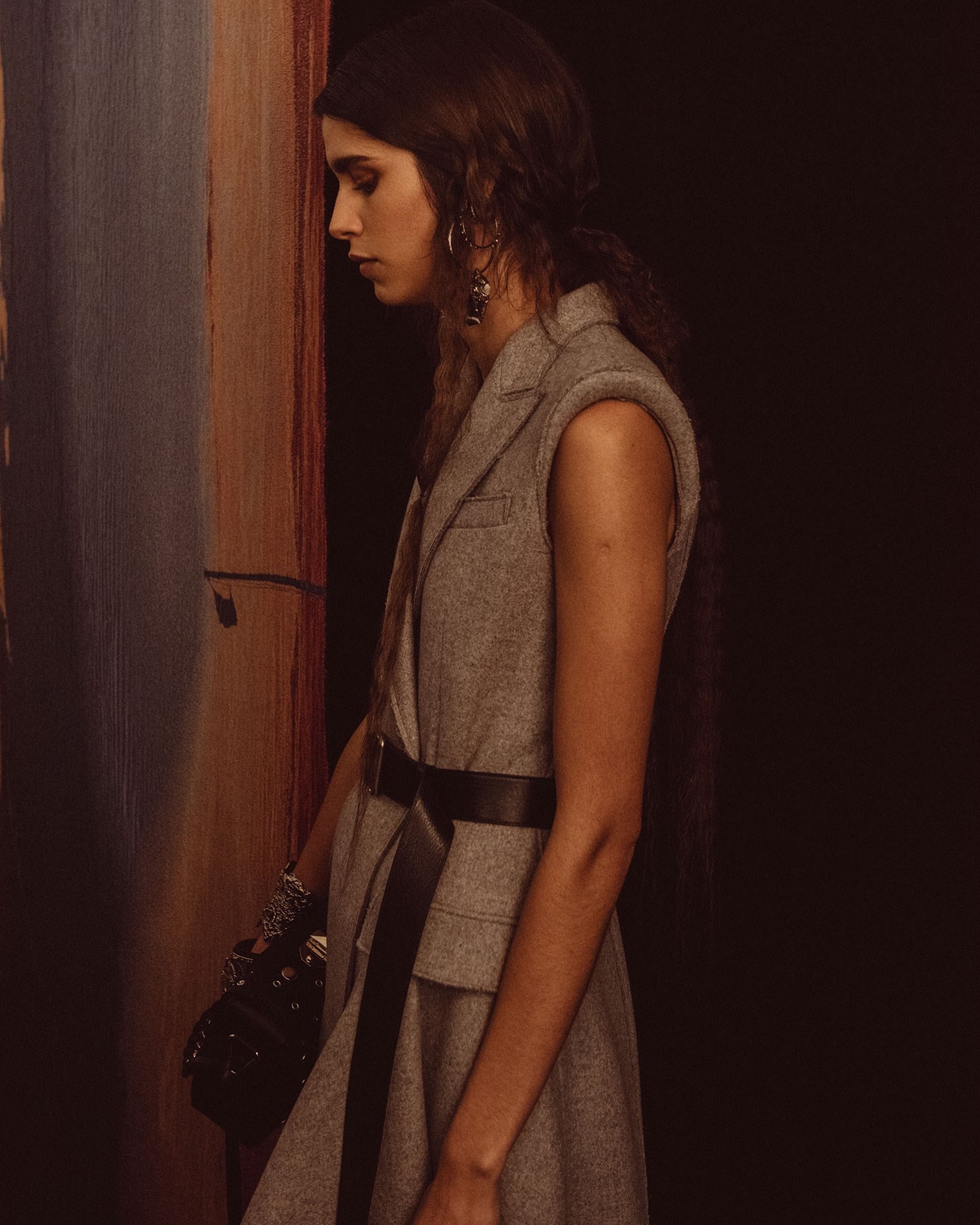
… And Of The McQueen Heritage
Lee McQueen himself was interested in the tension between vulnerability and strength, the emotional depth of haute couture clothing combined with the energy of the street, the ultra-feminine and the masculine. This too prevailed. Double-faced cashmere tailoring in dove grey and black and, later, satin-backed wools, boasted a signature built up McQueen shoulder and wide-legged trousers so long they puddled on the floor. “I wanted it to feel magical but also real, simple and eased,” Burton explained. And so, in the end, it did.
